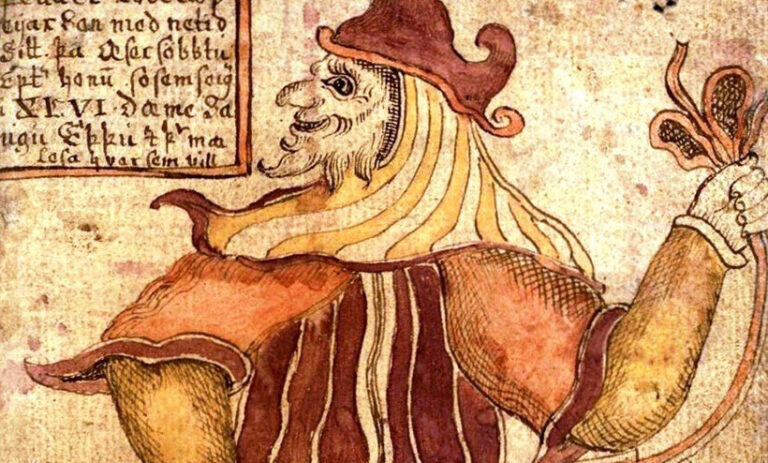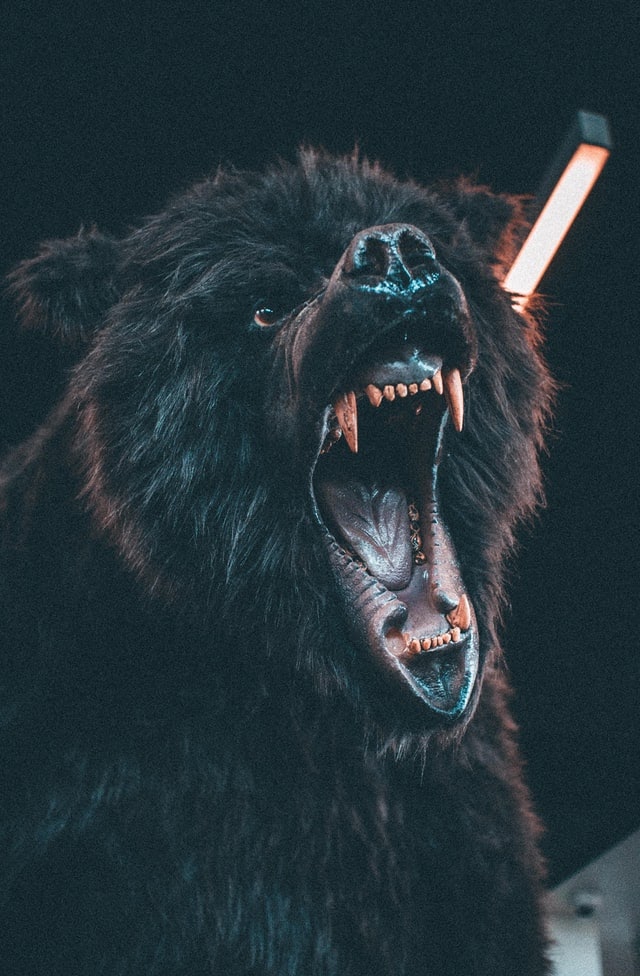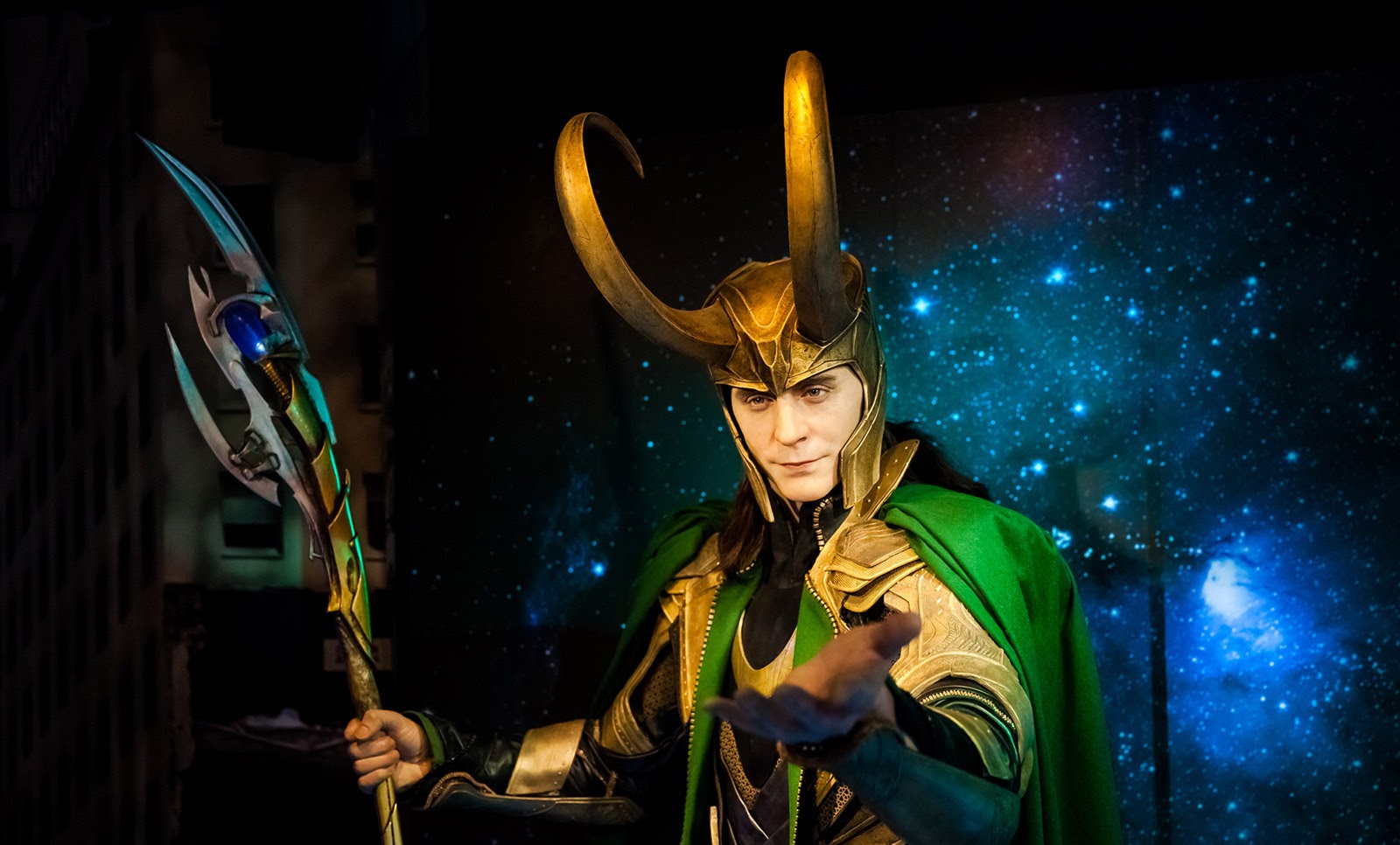Who is Loki? Many people are familiar with the Norse god Loki from modern depictions, but what does Norse Mythology say about the identity of Loki?
Æsir or Jötunn, friend or foe, Loki is many things, often at the same time. Read on to find out more about Norse mythology’s most mischievous god.
The identity of Loki
Once in a lecture on Viking artefacts, my professor asked us why we have not yet found any statues that are thought to portray the god Loki. After a short discussion, she provided her own theory:
“Loki is a chaos god. You wouldn’t pray to Loki; you would pray to the other gods to keep Loki away.”
While Loki may not have been favoured among the pagan Scandinavians, his popularity has increased in recent years along with a renewed interest in Norse mythology (something no doubt helped by Tom Hiddleston’s portrayal of the character in the Marvel movies).
While modern depictions of Loki can vary from the sinister in Neil Gaiman’s American Gods to the misunderstood in Joanne Harris’ Runemarks, they generally follow the same blueprint. Loki tends to be portrayed as mischievous and self-serving, yet lovable and charming. He is also often framed as an antagonist, although he is rarely a stereotypical “bad guy”.
However, while Loki’s characterisation is consistent in popular culture, there is very little consistent about Loki in Norse mythology.
Loki: a trickster God
In Norse mythology, Loki is best known as the trickster god. A lot of the time, he uses his cunning to help the Æsir out of trouble – other times, he’s the reason they’re in trouble in the first place.

However, other than being a trickster, it is difficult to say exactly what else Loki is. He is both Æsir and Jötunn. He is generally male – and sometimes female. The Æsir are infuriated by him and dependent on him. He helps the Æsir and marches against them in Ragnarok.
Confused? Don’t worry – so are we. Strap in – this is going to be a bumpy ride!
Æsir or Jötunn?
While there are lots of characters within Norse mythology, the two main groups are the Æsir (the gods) and the Jötnar (often translated as “giants”). The Æsir and the Jötnar have a literal love-hate relationship: they are just as likely to fight as they are to marry and/or have children.
When they do have children, this union is generally between male Æsir and female Jötnar, and even Odin himself has a Jötunn for a mother. Despite this, he is still classified as an Æsir as Norse mythology is patrilineal, which means that bloodlines run through the father.
Read more: The Creatures of Norse Mythology
Like Odin, Loki is also the child of an Æsir and a Jötunn – with a marked difference. Loki’s father is Fárbauti, a Jötunn, and his mother is Laufey, who is thought to be an Æsir (though this isn’t specified).
Therefore, Loki should technically be classified as a Jötunn. However it’s not quite as simple as that.

In Viking times, it was common for children’s surnames to be made by taking their father’s first name and adding “son” or “daughter” onto the end. This practice is still common in Iceland today. Loki however takes his mother’s first name for his surname, “Laufeysson” (lit. son of Laufey), instead of his father’s.
Furthermore, in Lokasenna (“The Flyting of Loki”), he mentions that he is blood brothers with Odin:
Loki spake:
9. “Remember, Othin, in olden days
That we both our blood have mixed;
While we don’t know why he received his mother’s name or how the blood pact with Odin happened, these factors suggest that Loki chooses his allegiance to the Æsir over the Jötnar, in spite of his bloodline – even though this choice eventually changes.
Was Loki male or female?
Loki’s parentage is not the only instance of him defying the gender norms of Norse mythology. His own gender changes throughout the stories.
In both myths and popular culture (as well as in this blog post), Loki is generally described as being male. But this is not always the case.
In Þrymskviða (or Thrymskvida, “the Lay of Thrym”), Thor and Loki must pretend to be Freyja and her handmaiden in order to get Thor’s hammer Mjölnir back from a Jötunn king named Thrym.
When Thor is in disguise, the text keeps his male pronouns. However, when Loki is in disguise, the text switches to female pronouns, suggesting that his transformation into a handmaiden is much more… thorough:
20. Then Loki spake, the son of Laufey:
“As thy maid-servant thither I go with thee;
We two shall haste to the giants' home.”
26. Hard by there sat the serving-maid wise,
So well she answered the giant's words:
“From food has Freyja eight nights fasted,
So hot was her longing for Jotunheim.”

In addition, while Loki fathers the majority of his children, he also mothers one of them. In one of the stories told in Gylfaginning (“The Beguiling of Gylfi”), Loki turns himself into a female horse in order to lure the stallion Svadilfari away from his work.
When Loki returns, he is pregnant and he later gives birth to an eight-legged horse named Sleipnir, who becomes Odin’s steed.
Therefore, while Loki is often in a male form, he is not bound to a single gender like the other Æsir – nor to the gender norms that follow.
Friend or foe?
As mentioned at the beginning, Loki is a god of mischief and often causes trouble for the Æsir, even when he’s on their side. For example, he cuts off Sif’s hair for seemingly no reason other than it amuses him.
However, he always fixes his mistakes, often at an added benefit to the Æsir. To replace Sif’s hair, Loki has the Dwarves make her new hair out of pure gold – as well as a spear (Gugnir) and a ring (Draupnir) for Odin, a hammer (Mjölnir) for Thor, and a boar (Gullinborsti) and ship (Skidbladnir) for Freyr.
Loki is also frequently called upon to help the Æsir when he hasn’t done anything wrong. In Skáldskaparmál (“The Language of Poetry”), the Jötunn Skadi travels to Asgard to avenge her father, Thjazi, who was killed by the Æsir.
After some negotiations, she agrees to accept compensation for his death instead – and one of the terms is that the Æsir have to make her laugh.
In the end, Loki succeeds by means of a goat, some rope and his own *ahem* extremities. The Æsir rarely ask this level of sacrifice from each other and barely acknowledge what Loki does for them.
However, throughout the myths, Loki gradually changes from an ally to an enemy. In Lokasenna, he storms into a feast held by the Æsir and insults them one by one, only leaving when Thor arrives and threatens him. In Gylfaginning, he tricks the blind god Höðr into killing Baldr and then stops his release from Hel by refusing to cry for him.
By the time of Ragnarok, it is clear that Loki is no friend of the Æsir, as he leads the army of the dead out of Hel into battle against them. However, whether he was always destined to be their enemy or whether he was pushed into this role due to how the Æsir treated him is up for debate.
Father of victims or father of monsters?
Of all Loki’s children, the three he fathers with the Jötunn Angrboda are the most monstrous: Fenrir, the giant wolf, Jörmungand, the world serpent, and Hel, who rules over the realm of the same name in Niflheim, where all those who die of sickness or old age go.

While these three technically have an Æsir father and a Jötunn mother, they are not counted among the Æsir. In fact, two of them lead to the death of two important Æsir: Fenrir kills Odin, and Jörmungand and Thor kill each other.
However, much like their father, it is unclear whether these three were destined to be the downfall of the Æsir – or if they became that way because of the Æsir.
In Gylfaginning, it is said that when Odin found out about Loki’s children, he “kastaði” (literally “threw or cast”) Jörmungand into the sea and Hel into Niflheim. Even Fenrir was originally a friend of the Æsir and lived among them in Asgard – before they became fearful of his size and bound him, putting a sword in his mouth so he couldn’t bite.
Did Loki father monsters? Or did the Æsir create monsters?
Hero or villain?
So we come to the final question: “Is Loki a hero or a villain?”
We know that Loki becomes one of the main antagonists of the Æsir – but that in itself does not mean that he is a villain. According to the Oxford English dictionary, the word “antagonist” means “A person who actively opposes or is hostile to someone or something; an adversary”. The Æsir are Loki’s main opponents – and by all accounts, their behaviour is pretty terrible. Not only do they treat both Loki and his children badly, but they frequently lie, cheat, steal and kill – often for their own interests.
Furthermore, it is clear that Loki, due to his love of mischief, is a god of chaos – but that does not make him automatically bad either. Chaos is bad in Norse mythology because it goes against the order set by the Æsir. However, they do not keep order because it is good – they keep order because it benefits them.
Therefore, whether Loki is a hero or villain depends on your perspective of the Æsir. To find the answer, I think we should instead ask: “Are the Æsir heroes or villains”?
It’s complicated
So, what is Loki? The short answer is: we don’t know. We can say that he is a trickster, but other than that, it’s difficult to put any definite labels on his identity. Perhaps this is what makes him such a good trickster in the first place!
As with most things concerning Norse mythology, it’s difficult to gain any exact answers from the source texts. Loki’s identity will therefore probably differ from person to person, depending on how you view both Loki and the Æsir.
Ultimately, when it comes to Loki, there is only one thing we know for sure: it’s complicated.
What do you think about Loki? Would you like to see more investigations into Norse Gods? Let us know in the comments!




I have long been fascinated by Norse myth and Sagas, so the more the merrier for me. You uncover things I have not imagined.
Something else you might delve into is Norse science – for instance, how did they use the Sunstone to navigate – hard to believe they took those vessels across the Atlantic Ocean. I have seen the ships in Oslo – really hard to imagine those with their minimal freeboard in a bad storm…
My daughter lives in Norway, so your blog/newsletter helps me imagine the life she has. And, I have had the privilege to visit – lucky me.
Thank you!
Americans are very likely to portray Loki as some kind of quirky Norse Satan. This is not the case. It is just that there are religious fanatics in America, including particularly really nasty ones who caused the genocide of the Native American religion, and anything not Christian is Satan and that’s all they know.
They’re taught about Good and Evil without understanding it philosophically.
Norse mythology, is not about good and evil. It is about chaos and order. Much like the ideas of science today, the world is created out of chaos. Between the two extremes of Fire and Ice. It’s like that video game “Primal”. Chaos and Order both have to exist, but they also always have to be in balance. Of course in the video game, Chaos is perceived as evil, and Order as good. I however, consider myself a creature of chaos. Order is petty and manmade. Chaos is divine. There’s even a scientific theory, don’t ask me what it is, called “Chaos theory.”
Norse mythology has Giants, Dwarves, Elves, and Monsters. We shouldn’t ask why are there Giants, we should ask why are there Gods?
Giants are more powerful than the gods and older. The sky is thought to be a Giant’s skull, the stars holes in that skull, like living under an egg shell.
Perhaps at first the Norse had only these Giants, Dwarves, Elves, and Monsters. Perhaps it was contact with alien cultures that led to the creation of the Gods.
The Norse had plenty of that.
Of course it is impossible to know.
The idea that the earth is the body of a dead or sleeping Giant is prevalent in England as well. At least, I heard about it in one book I read, called “Albion’s Dream”. It was pretty good.
Before Christianity and Roman ideas of Gods, the land didn’t have Gods, but it did have an idea of magic of some kind.
The Norse especially had magic.
Despite Loki killing Balder, I don’t see him as evil. He’s definitely the most entertaining. And the mystery in his pants is one of the most entertaining things in mythology. A being who is both male and female at the same time is truly powerful. Who knows both sides of that coin. This is the most important part. He is both mother and father. It is not some pretend game, it is real with Loki. Whatever he’s got under his shorts swings both ways. Who knows what it even looks like.
As a being of chaos, maybe the lack of representation isn’t because of their distaste for Loki, but because he is too strange and powerful a being to be represented. He’s a shapeshifter, maybe his form is fluid.
I’m no scholar, but I was always told that Loki was merely sly, and not evil, so him constantly being portrayed as a villain by Marvel kind of irked me.
Though I am an American now, part of my heritage is from Finland. Also Scotland, Russia, Galitzeya, and Romania.
Generalization of an Entire people is crazy.
Brilliant. Insightful. Broad & useful thoughts shared here. Thank you very much 🥰
Don’t go running your mouth about Americans without knowing us! First off I disagree with your thoughts on all Americans killed Native Americans because my family never did! We came after the fact and we came from Norway and Scotland. We don’t all believe Loki’s “bad” as you put it. So don’t go throwing your two cents into a pot that it doesn’t belong in!
I would also like to say about Loki, it is funny that he is portrayed now as looking like Jim Morrison. “Indians scattered on the highway bleeding, ghosts crowd the boy’s fragile eggshell mind”. This is one of the most poetic and haunting lyrics from the song “The End” by “The Doors”. Perhaps it is more than coincidence.
My name is Shukryyah. Noe. But I grew up with the nickname Loki. My life is very complicated is there any way to communicate with this ( Loki.. to get him/ her off my case!!!
I know I am 50% Norwegian, but I never actually knew virtually anything about Norse Mythology when I was growing up—and, I am just learning about it, as an adult. I know I was slightly introduced to it though the Marvel movies-Loki played by Tom Hiddleston, and Thor played by Chris Hemsworth. It’s actually taking me a bit of time to learn about Norse Mythology, but I am finding it very interesting and very intriguing, at the same time. I have the strong sense that learning the truth about the Norse gods is nothing compared to any of the Marvel movies (where Thor is portrayed as the hero and Loki as the villain) rather, realizing that Loki is the trickster of the gods can really explain a lot. Then, he compensates the other gods by getting them out of trouble. So, it’s a bit like there’s a time for everything. Skol!
Thank you for this wonderful walk through the history of these mythological characters! Recent depictions of Loki as a weaver of Yggdrasil are troubling. The Norns seem to have been erased and replaced with a single powerful man. This is no Loki, God of Stories, but Loki, God of all Realities. I would love to see an update to this work, to address the latest depictions (misrepresentations?) of Norse mythology.